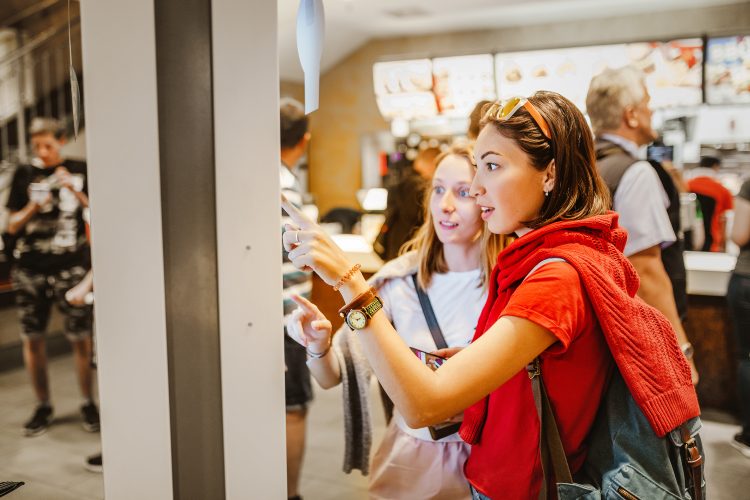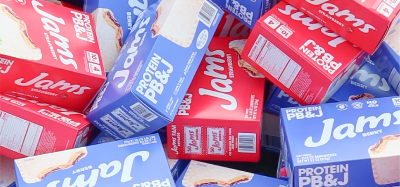Will AI enhance or disrupt the fast food industry?
- Like
- Digg
- Del
- Tumblr
- VKontakte
- Buffer
- Love This
- Odnoklassniki
- Meneame
- Blogger
- Amazon
- Yahoo Mail
- Gmail
- AOL
- Newsvine
- HackerNews
- Evernote
- MySpace
- Mail.ru
- Viadeo
- Line
- Comments
- Yummly
- SMS
- Viber
- Telegram
- Subscribe
- Skype
- Facebook Messenger
- Kakao
- LiveJournal
- Yammer
- Edgar
- Fintel
- Mix
- Instapaper
- Copy Link
Posted: 21 December 2023 | Gopi Polavarapu | No comments yet
AI advancements promise to revolutionise food services, but success relies on sophisticated conversational abilities and personalised strategies, Gopi Polavarapu discusses.


As the world quickly shifts toward an AI-first framework, the food and beverage industry is embracing cutting-edge technologies like conversational AI (CAI) and generative AI (GAI) to reshape the future of food services. According to the 2023 State of the Restaurant Industry Report, 58 percent of restaurant operators are pinning hopes on the technology to help alleviate labor shortages this year.
Major fast food chains nationwide are launching AI deployments across select locations to help automate customer service and reduce the reliance on human labor. Chains like Popeyes, Panera Bread, Taco Bell, and more are testing CAI and GAI at the drive-thru to help automate and streamline ordering. However, the successful scaling of these initiatives hinges on their effectiveness. There have been instances of fast food chains introducing automated drive-thru order-taking that unintentionally frustrated customers due to inaccuracies and repetitive use of upselling.
In the food business, the customer experience carries great significance. This is especially true for drive-thru and off-premise dining, where the customer’s objective is to get in and out quickly, with exactly what they ordered. When AI drive-thru virtual assistants get their order wrong, or attempt to upsell too frequently, customers are likely to leave dissatisfied.
AI, when implemented properly and intelligently, can greatly assist restaurant operations. Below are four main areas where the food service industry can utilise CAI and GAI solutions:
- Omni-Channel Order-Taking Automation – Many restaurant companies are exploring solutions for the drive-thru and call-center to address challenges, particularly with orders that involve complex utterances and interruptions in the normal order flow, or “Happy Path”. An ideal solution involves leveraging food-industry fine-tuned large language models (LLMs) which are customised and trained on the restaurant’s menu and operations. Additionally, these LLMs are seamlessly integrated with existing systems, including Point of Sale (POS), ensuring swift and accurate processing, and can understand local accents and nuances for precise order taking.
- Customer Service – Key use cases for customer service bots include assisting with misplaced deliveries, tracking and arranging re-deliveries, addressing missing items or discrepancies in orders, arranging refunds or replacements, and managing feedback on food quality. Additionally, these bots can provide real-time assistance and updates for delivery-related questions or concerns, contributing to customer satisfaction and service efficiency.
- Mobile Apps – Digital chatbots and self-service options can be incorporated into mobile apps to improve the customer experience and streamline ordering. These apps feature digital virtual agents that engage in natural language conversations with customers, addressing inquiries about dietary restrictions, allergens, food preparation, and more. In cases of complex requests or issues, the virtual agent can smoothly hand over the conversation to a live representative, combining AI and human support to enhance overall customer satisfaction.
- Employee Assistance – Restaurants are struggling with high employee turnover and a shortage of skilled labor, making effective onboarding, training, and upskilling crucial. Many workers lack essential knowledge about menu items, and generative AI could be used to provide quick answers thru voice-activated devices. Additionally, chatbots can streamline employee onboarding and HR tasks, and improve technical issues for IT support.
While these use cases are promising, food chains need to consider the following for AI to truly enhance the overall customer experience:
AI should be conversational, not scripted
Humans are comfortable with natural language, so for AI implementations to be effective in food service, they must be genuinely conversational. Legacy chatbot systems may have limitations that often follow hard coded, scripted conversation. They may be incapable of handling complex customer orders and delivering accurate responses in real-time, which defeats the purpose of ‘fast food’.
For example, in a drive-thru ordering scenario, the customer may interrupt the AI virtual assistant to ask a question about adding an ingredient, change the order or ask about promotions. The virtual assistant must be ready and able to properly pivot and maintain the context of the conversation – if it is unable to handle interruptions from customers, it has not been integrated effectively. Simply put, if the AI can’t handle an interruption or answer a question, it’s not so intelligent.
Hyperpersonalisation is key
AI in food service should be capable of emulating human responses with empathy and context-awareness. It is important for it to automatically adapt its vocabulary and language to match the user demographics, and respond to changes in customer voice tone, facial expressions, sentiments, and body language. This ability enables the AI to create tailored interactions, offering personalised menus, services, and solutions based on the users’ unique voice traits, sentiment and patterns.
Machine Learning (ML) plays a crucial role here, using special algorithms, features, and datasets that continually learn and adapt through experience. As they receive more input data, CAI and GAI systems improve their pattern recognition abilities, utilising this knowledge to make predictions and deliver more accurate outcomes in quick timeframes.
There is a time and place for upselling
There are many challenges and nuances of upselling in any sales environment. In the context of AI-driven interactions in the food industry, the drive-thru is a place for convenience and timely service. While upselling may be good for the business’ bottom line, ill-timed offers from a worker or an AI agent can result in customer dissatisfaction.
For upselling to be effective, virtual assistants need to exhibit human-like intelligence to make informed decisions about when to upsell. For example, if a customer orders a fish sandwich, and the AI asks if they’d like to upgrade to a meal, and the customer replies ‘yes,’ the customer is now already aware that they can upgrade to a meal. In this case, an intelligent, nuanced decision would be to not upsell the next item.
When done right, consistent and nuanced upselling is an advantage of AI over human workers. The overall goal is to avoid robotic, repetitive upselling approaches and instead offer a more personalised and effective strategy.
The proper CAI solutions will revolutionise the food industry
From self-service kiosks to drive-thru automation and customer service support, there is immense potential for conversational and generative AI solutions in the foodservice industry. However, its success hinges on its ability to engage in genuinely conversational interactions, offer tailored services and implement personalised and effective upselling strategies.
When the proper AI solutions are implemented, they can revolutionise the foodservice industry, streamlining operations and improving customer satisfaction and loyalty.
About the author











